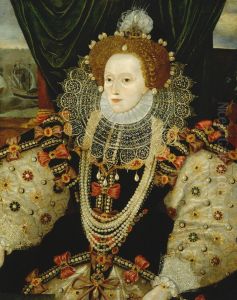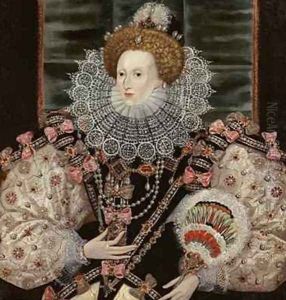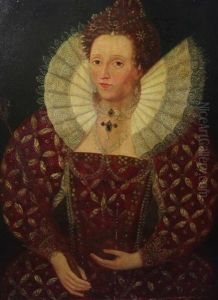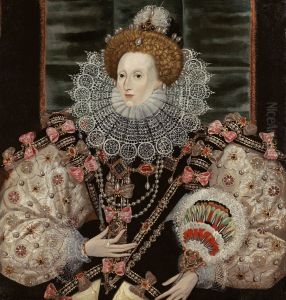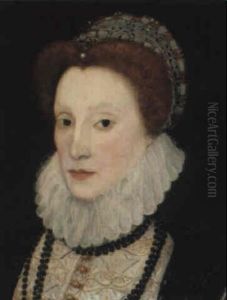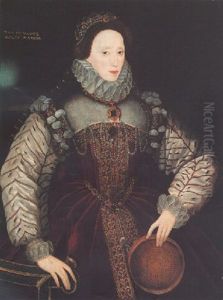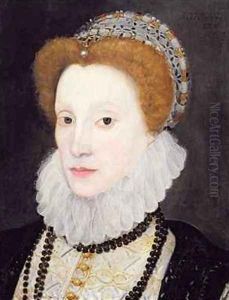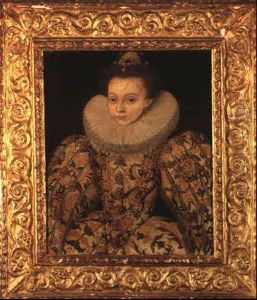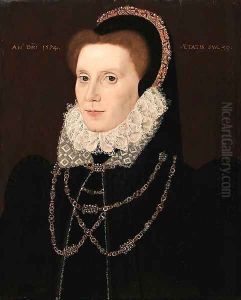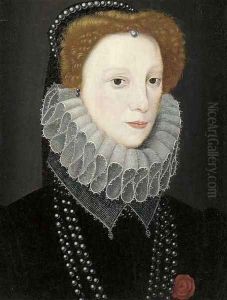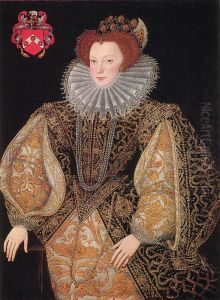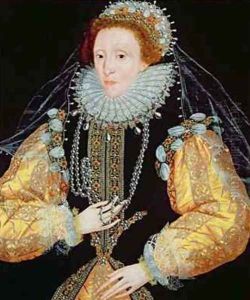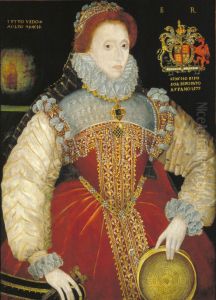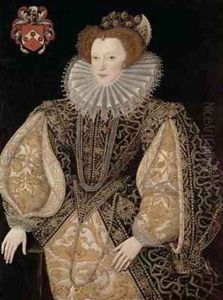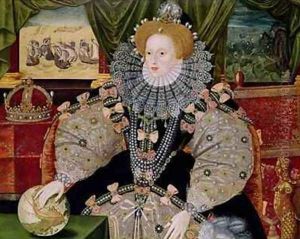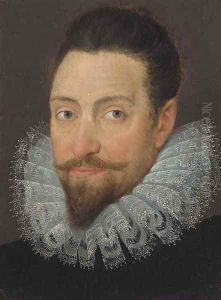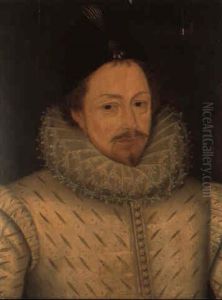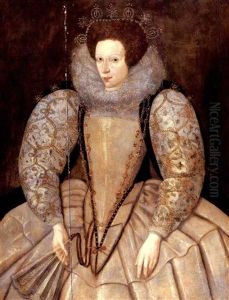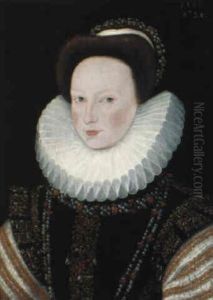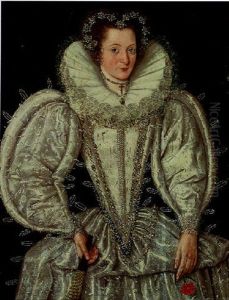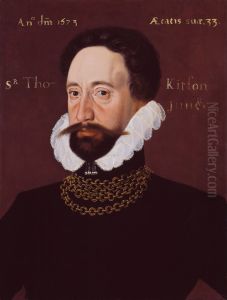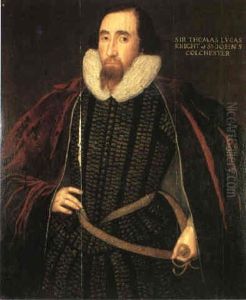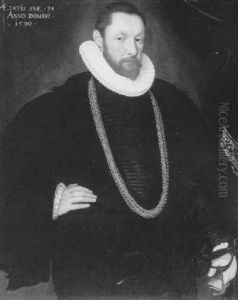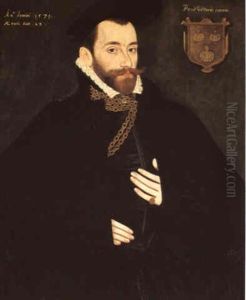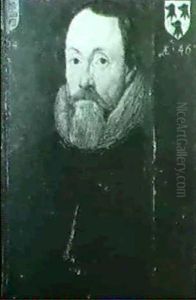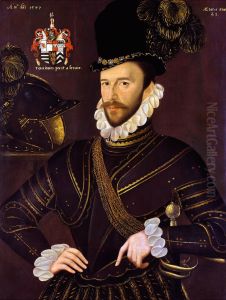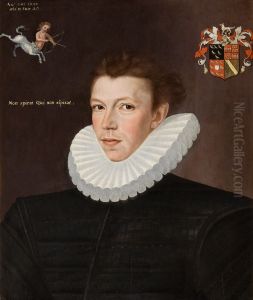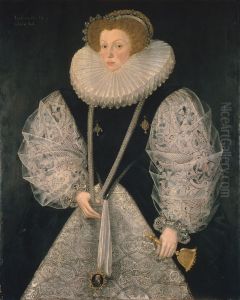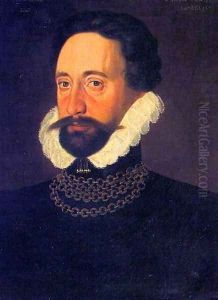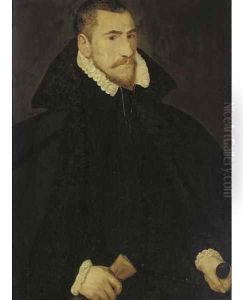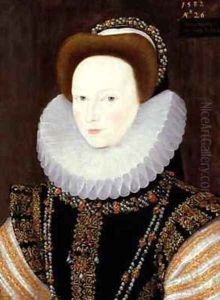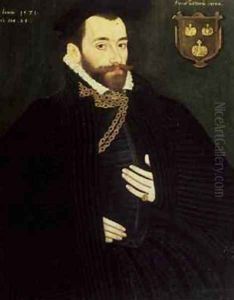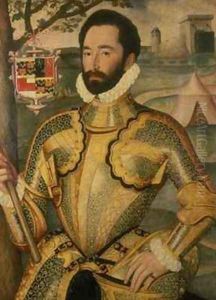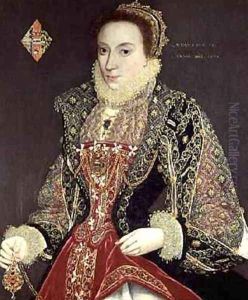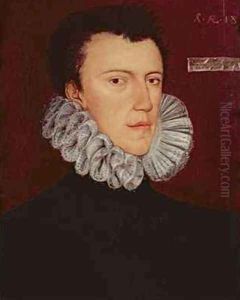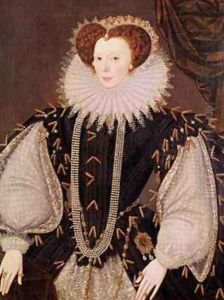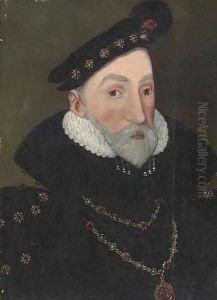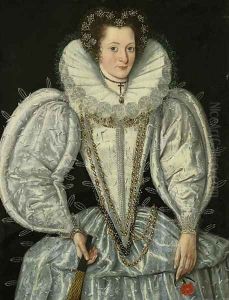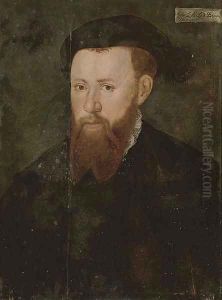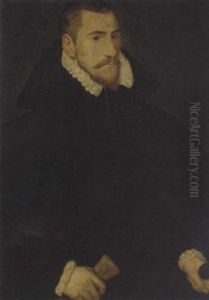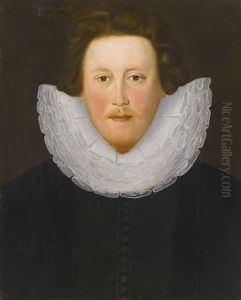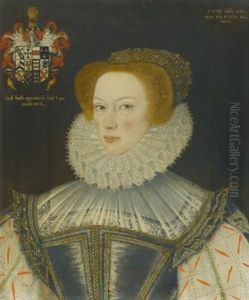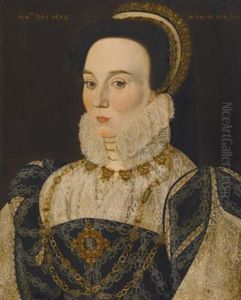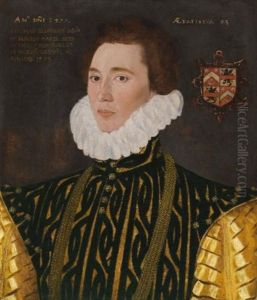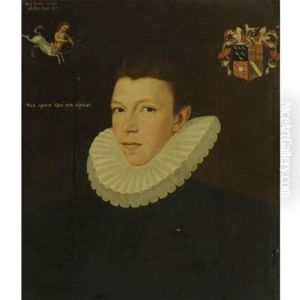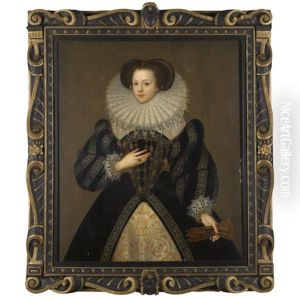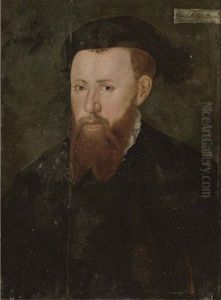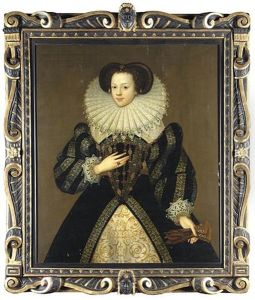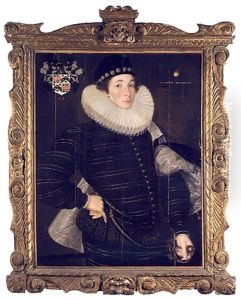George Gower Paintings
George Gower was an English portrait painter who rose to prominence in the late 16th century during the reign of Queen Elizabeth I. Little is known about Gower's early life or training, but he is first documented in 1573 when he was commissioned to paint the portrait of Sir Thomas Kytson. By 1581, Gower had become sufficiently well-regarded to receive the official title of Serjeant Painter to the Queen, a position that entailed responsibility for the maintenance and production of royal portraits and decorative works for the crown.
Gower's work is characterized by meticulous detail and a somewhat conservative style that was typical of English portraiture during this era. He is best known for the 'Armada Portrait' of Queen Elizabeth I, although this attribution has been a matter of debate among art historians. His portraits often included symbolic elements and inscriptions, which provided additional layers of meaning to the works.
Despite his position and the number of works attributed to him, Gower’s life remains somewhat obscure and his oeuvre is not as well-documented as some of his contemporaries. His portraits are valuable for their historical significance and offer insights into the fashion, personality, and politics of Elizabethan England. After his death in 1596, Gower's influence waned, and he was largely forgotten until the 18th century when interest in Elizabethan portraiture revived. Today, his paintings can be found in various art museums and collections around the world, appreciated for their representation of the English Renaissance and the technical skill of the artist.
